Clancy Tucker's Blog, page 238
December 10, 2015
11 December 2015 - THE WONDERFUL PROTEA
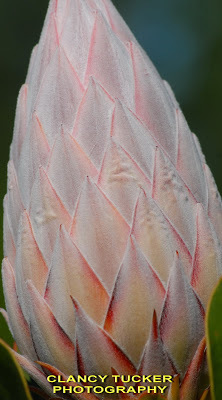
THE WONDERFUL PROTEA
G'day folks,
Today, I present one of my favourite plants and flowers. Protea is both the bottanical name and the English common name of a genus of South African flowering plants, sometimes also called sugarbushes. Here are a few tips on growing them, and some photos I took recently.
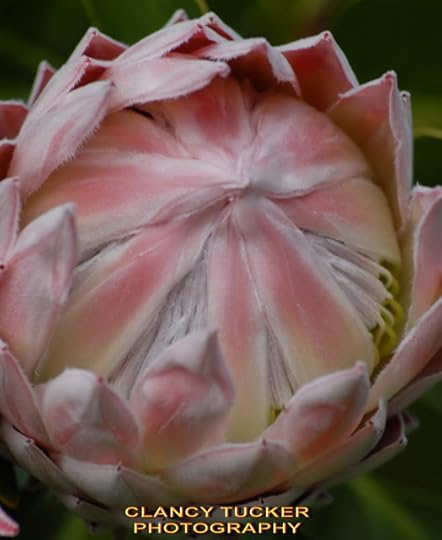
SoilProteas prefer a nice sandy loam or open soil. Some Proteas are less fussy and are quite happy in a heavier soil although they will not survive in heavy clay soils. If you do have heavy soils it will be necessary to first mound the soil to improve it and then dig in compost and gypsum to break up any residual clay.
pH or the acidity or alkalinity of soils. Plants often grow best where the soil pH is similar to their conditions of origin. Proteas prefer to grow in acidic soils as this reflects the conditions where they originate in South Africa and Australia. The majority of Proteaflora products need an acidic soil with a pH between 5.6 and 6.5. Some of our products do tolerate neutral to alkaline soils with a pH between 6.6 to 7.5. If that's a bit confusing, your local nursery should be able to tell you about your local soil and advise you on testing and treatment, if necessary. Check out the Our Plants page to find the plants best suited for your garden.
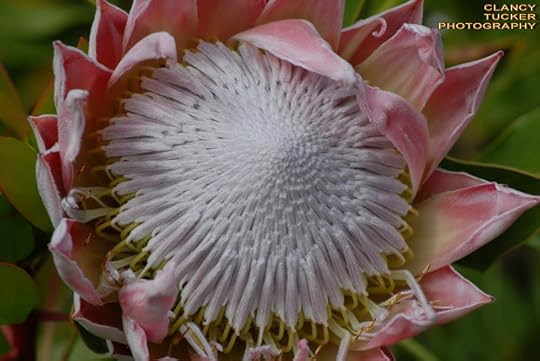
Old flower bedOnly plant in old flower beds if no phosphorus fertiliser has been previously used. Proteas are best grown away from plants you need to feed regularly. Avoid mushroom composts as they contain salts harmful to Proteas. It is also best to avoid applying blood and bone, manures and products made from them such as dynamic lifter, as the nutrient balance is not suitable for Proteas.
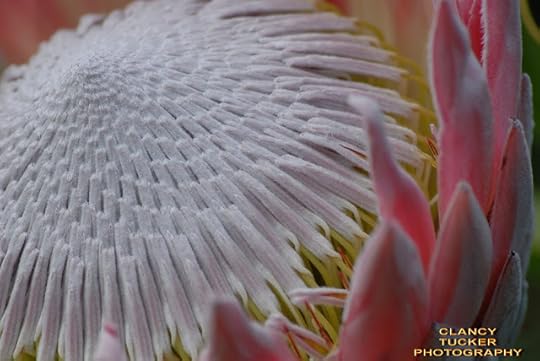
PlantingIn the Garden - Dig a hole to twice the width of the pot, when planting ensure your protea is not planted any deeper than it was in the pot. Firm the soil around plant and if required support with the plant with a stake.
In pots – Use a container of at least double the size of original and keep it off the ground to assist with proper drainage. Your potting mix needs to be suitable for natives with a slow release fertiliser.
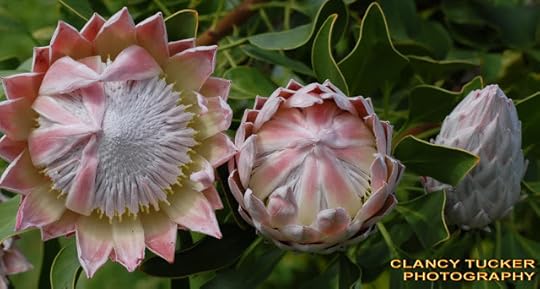
PositionProteas thrive best in full sun with good air movement. The more sun your Proteas get the more flowers they will produce. Some Proteas can be grown in semi-shaded areas. Proteas are fairly frost tolerant once established. In winter they can usually handle frosts around minus 2° and some are more frost hardy, tolerating frosts of minus 6°. In the Southern hemisphere, Proteas will not survive on south facing walls.
MulchA natural mulch such as bark, straw or leaves protect the plant's surface roots, retain moisture and keep weeds down. Pull out any weeds by hand and avoid using herbicides near Proteas.
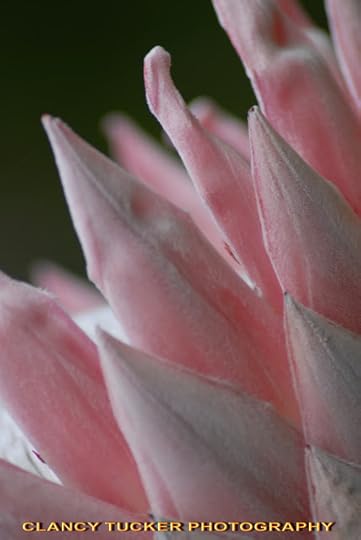
WaterProteaflora plants are pretty tough once they're established. Water at least twice a week in the first summer, preferably daily when it's really hot. The soil around the root system should not be permitted to completely dry out when the plant is young. You can gradually reduce watering as the plant becomes established about 2 years after planting old. Then the watering frequency depends on the prevailing conditions and whether your variety is listed as drought tolerant.
In pots they like a nice drink every day.

Clancy's comment: Pretty cool plants, eh?
I'm ...
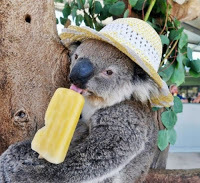
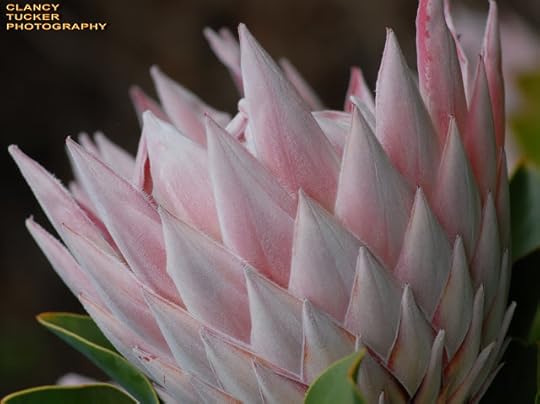
Published on December 10, 2015 03:27
December 9, 2015
10 December 2015 - SHIRIN YASEEN - Guest Journalist

SHIRIN YASEEN
- Guest Journalist -
G'day folks,
Today, I interview an award-winning journalist who lives in a town where I once lived in the USA.
Welcome, Shirin ...
. TELL US A LITTLE ABOUT YOUR WRITING JOURNEY.
I have been writing since I was a kid. I wrote when the conflict between Israelis and Palestinians was on its highest peak in the late 80s, I was a kid expressing to myself in writings and drawing why there is occupation, and why I can’t go to school, and why I saw an injured man on my way to the shops, and whey there was a tear gas canister in my house, and why am I sad and feel unsafe. And growing up like that, I was actually getting high marks in the essay classes, and my Arabic teacher would write to me a comment “Continue in this path, you are doing a good job”. Most of the subjects I chose to write about were about societies and the “utopia” that I would like to live in. I turned 18 and went to the University in the West Bank, Palestine, then tensions rose high again between the Palestinians and the Israelis, my university was shut most of the year, and so I started volunteering with an Institute called Tamer which cares about educating youths and children. My job as a volunteer was basically to write stories for the newspaper aimed at educating children, and also I edited the stories sent to the institute by kids that were published in the same newspaper afterwards. I continued writing for the newspaper afterwards, doing some investigative reports about certain issues either caused by the occupation or by the society. The only credit I took was that my name was written on those pieces, and that was enough for me.
2. WERE YOU A GOOD READER AS A KID?
I read books like a warm. There was a library near my house, and I went there almost every day, they had all the stories that I could just put in a safe and put it inside my heart.
3. WHEN AND HOW DID YOU BECOME A JOURNALIST? WHAT INSPIRED YOU?
I studied Finance at the University, and when I graduated I went to work at a bank, it took me two weeks there to realize that this is not what I want to do. I left there and never looked back. I found an ad in the newspaper that says a secretary wanted at a RADIO STATION. That was the moment I thought this is my chance to be part of what I always loved. I went there as a secretary but left as a producer/journalist/broadcaster after I proved to the managers in charge that I can do a lot more than answering phones. I had this job in mind for years, but I thought writing was only a hobby or a talent, but doing something that I didn’t like at the bank made me realize that I have other options in life.
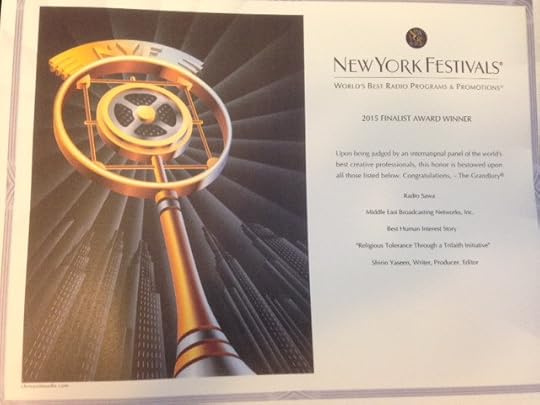
4. WHAT DO YOU ENJOY MOST ABOUT BEING A JOURNALIST?
I love the freedom to be able to ask every question, and people actually answer. When I was working in the Palestinian Territories I met a lot of presidents and officials and that’s something unusual and not everyone can have access to. I enjoy being the voice of the people. I enjoy going to bed, thinking today the public know more about that village whose residents are suffering from water shortage, for instance, maybe someone can help.
5. WHAT IS THE HARDEST THING ABOUT BEING A PROFESSIONAL WRITER?
I am actually doing my graduate studies at the American University in Washington DC in International Media. And my first course that I just started last week is a Writing class. It is very difficult, I thought I was professional, apparently there is a lot to learn. But for me, it is the language that might be a problem since my mother tongue is Arabic. Writing in English is a challenge. But in general, finding a way to start the story, i.e. the first sentence in any article, is the most difficult one. It should be catchy, powerful and should give the reader and idea of what will come, and also it should be impressive.
6. WHAT WERE YOU IN A PAST LIFE, BEFORE YOU BECAME A WRITER?
I don’t call myself a writer, but writing is the most important part of journalism. I would say I was just an ordinary person who found refuge in writing.
7. WHAT IS YOUR GREATEST WRITING / BROADCASTING ACHIEVEMENT?
One of my stories made it to the finalist at the “New York Festivals Awards, world’s best radio programs” this year. It was about a tri-faith center in Nebraska that built a Mosque, a Church and a Synagogue. They are trying to solve the Middle East problems by making peace between the three religions.
8. HAVE YOU BROKEN ANY BIG STORIES?
I like to think that one of my stories or more made a difference in someone’s life, or changed a law, or created an impact. I think stuff like that happened but on a small scale when I wrote in the local newspapers and wrote about the people’s lives.
9. DO YOU ENJOY WRITING / REPORTING FOR A MEDIA CORPORATION?
I do. This is what I do now. Sometimes I fall under pressure having to meet deadlines and being in the office for certain hours. It could limit the creativity of a writer, but there are advantages to it, basically things are clear you know what to expect during the day and you know what is expected from you.
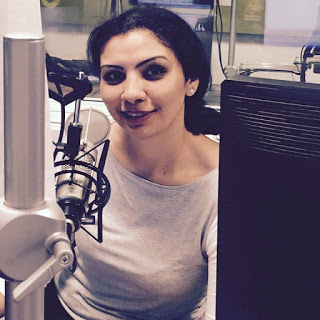
10. WHAT TOPICS DO YOU COVER?
I cover politics mostly. But when I work in the features department I like to go more humanitarian, calling ordinary people up, asking them about their lives and writing something about them
11. WHAT IS YOUR GREATEST JOY IN WRITING?
In writing I love the fact that I can put my thoughts in writing. They are not trapped there, no they go out and breathe the air of freedom.
12. WHO IS YOUR FAVOURITE AUTHOR AND WHY?
I have many favorite authors in Arabic. But the one I could think of who’s known internationally is Paulo Coelho, I read almost all of his novels. I guess I love his style and the topics of his books.
13. DO YOU WORK AS PART OF A TEAM, FREELANCE OR BOTH?
Right now I work as a part of a team. But I used to be a freelance journalist about five years ago.
14. WHAT WAS YOUR TOUGHEST ASSIGNMENT? WHY?
I was assigned to cover two controversial events back in 2012. The first was the American Israel public Affairs Committee (AIPAC), it was weird since I am Palestinian going there, I felt I was an outsider, having to listen to lectures that are one-sided regarding the Palestinian-Israeli culture. The other assignment was going to the Republican Primaries in Tampa, Fl. That was quite an experience, it was tough because I had to read the news trillion times to understand the politics of the United States, and the caucuses and elections and regulations. It was challenging but I learned a lot.
15. WHAT’S THE GREATEST COMPLIMENT YOU EVER RECEIVED FROM A READER?
Now that I work at a radio station, people would send me emails that they loved my feature story, but once someone told me that he could see my feelings in the report. You don’t see feelings, but he wanted to show how he felt that the words were powerful.
16. WHAT WAS THE WORST COMMENT FROM A READER?
Some people would just email me asking: why do you write these stories if you can’t help us. Esp when I do stories about a humanitarian crisis such as the one happening right now in Syria.
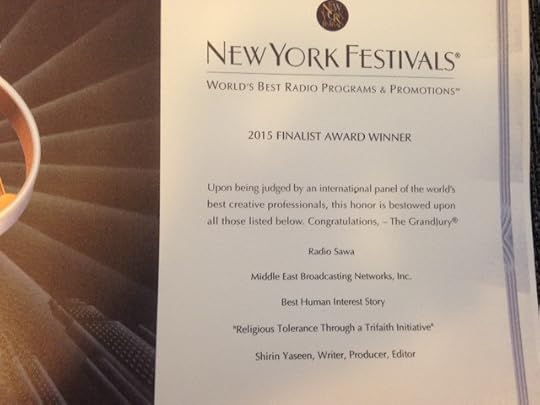
17. WRITERS ARE SOMETIMES INFLUENCED BY THINGS THAT HAPPEN IN THEIR OWN LIVES. ARE YOU BY THE STORIES YOU COVER?
Of course. Growing up under occupation played a huge part in my upbringing. I watched politics instead of cartoons, and heard gun shots instead of music. I was affected by what’s happening in my country, and my environment.
18. HAVE YOU WON ANY PRIZES OR AWARDS?
Actually I won a lot when I was a writer for the journalist back home. It was all local but meant a lot. But I got an award from International Red Cross in the Palestinian Territories for writing an emblem for them.
19. WHAT DID THEY MEAN TO YOU?
Every time I write about someone’s problem, I remember the killing and destruction I used to see back when I was a kid.
20. ANY OVERSEAS WORK?
I work now with Middle East Broadcasting Networks in the United States.
21. OTHER THAN WRITING, WHAT ELSE DO YOU LOVE?
I love drawing, but I am really bad at it. I tried to learn, but no matter how much I tried I end up drawing a flower.
22. WHAT WOULD YOU SAY IF YOU HAD AN OPPORTUNITY TO SPEAK TO WORLD LEADERS?
I would say: “I really don’t envy you”.
23. DESCRIBE YOUR PERFECT DAY.
Every day is perfect for me. I love it when I talk to my family and friends over the phone. I love it when I spend an afternoon with a friend. I love it when I am alone either reading or watching something. But I would think the world if I can have my siesta without interruptions.
24. WHAT ARE YOUR PLANS / ASPIRATIONS FOR THE FUTURE?
Right now I am doing my masters in International Media. I suppose I have my eyes on some international job at the U.N. or any international organization.

25. DO YOU THINK PRINT NEWSPAPERS ARE SERIOUSLY CHALLENGED BY THE INTERNET? HOW?
Yes I do. Not so many people buy things written on real paper. This is a challenge. I am one of the people who like to touch the paper when I read. But I think the world is going digital.
26. WHO OR WHAT HAS INFLUENCED YOU IN YOUR WORK?
Many people did. My supervisors are mostly the ones who take the credit, because they correct me when I make a mistake and they applaud me when I do something neat and nice.
27. WHO OR WHAT INSPIRES YOU?
The necessity of having to be powerful and good at what I do motivates me to do my best, I can’t be lazy or cheat at what I do, I can’t afford any fatal mistakes because it will affect my life. So I suppose I am inspired by my conditions.
28. DO YOU TAKE PHOTOGRAPHS TOO?
I do sometimes. When I go to cover a story outside, and then write it for the website so I attach a photograph with it. Nothing professional, just with my smart phone camera, very basic.
29. ANYTHING YOU’D LIKE TO ADD?
I like to listen to Mozart when I am writing any story. His music makes me calm and concentrate on what I’m writing. Write now I am listening to his best music as I am answering your questions.
30. WHAT WOULD BE THE LAST SENTENCE YOU’D WRITE?
I am ready to let go, and I am not afraid of what’s next.
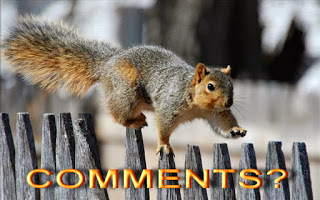
Clancy's comment: Thank you, Shirin. Well done. I think many of us find refuge in writing. Well said. Keep going.
I'm ...
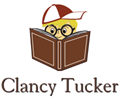
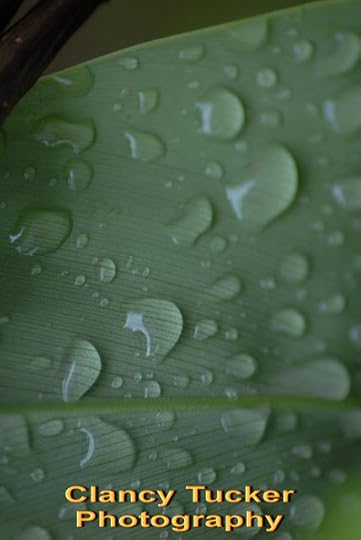
Published on December 09, 2015 02:22
December 8, 2015
9 December 2015 - OSCAR WILDE - AN INDECENT WRITER?
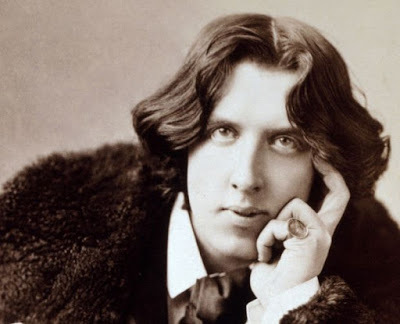
OSCAR WILDE- AN INDECENT WRITER? -
G'day folks,
Here is an author I'd love to have interviewed.
If there ever were an indecent writer, it would have been Oscar Wilde, the flamboyant 19th century Irish novelist, playwright, poet, aesthete, and all-around social taboo breaker. The improper Wilde was born 161 years ago during the extremely proper Victorian period. To celebrate Wilde’s birthday, let’s look at some of the ways he became a man of indecency, a label he would have probably been proud of.
1. Art for Art’s Sake
You could say a lot about the Victorian period, and countless dissertations, popular books, and films explore the nuances of this phase of human history. One broad characterization that can be made, however, was that Victorian life oozed a certain prudishness and moral righteousness and strict code of conduct. Born in Dublin in 1854, Wilde matured into a writer during the Victorian era’s prime, and the stuffy pomposity of the prevailing zeitgeist did little to inspire him. He rejected the idea that literature should have a social or moral purpose, as much of it did at that time, and instead he became involved in the Aestheticism (or Decadent) movement, a key tenet of which was creating “art for art’s sake.”
For Wilde, literature was not a vehicle for moral lessons; rather, it was a medium for conveying ideal beauty and sensuous pleasure. This was, in a sense, indecent, for Wilde willfully dismissed what was expected of a writer and instead worked to steer readers’ direction toward a new form of literature, giving us such beloved works as The Picture of Dorian Gray and The Importance of Being Earnest.
2. Of Prigs and Prudes
The society that Wilde lived in was one that valued traditions, of which he would waste no time casting off. What were they? Nobility, dignity, gender roles, piety, and, of course, intense restraint in the matters of sex (so much so that people used the language of flowers—carefully crafted floral arrangements designed to send coded messages to the recipient—to describe sexual feelings). As Wilde was attending college in Oxford, he grew to question such traditions (just as college students continue to do to this day) and soon began to reject them outright.
Wilde ridiculed sports, wore his hair long, and adorned his room with flowers, peacock feathers, and other fine objets d’art, such as blue china. He even became part of the Dress Reform Movement, which promoted new, more sensual fashion that rejected the dominant purity-centric styles of the day (and eventually gave rise to the acceptance of women wearing pants). Wilde’s own style—flamboyant enough to give Liberace a run for his money—went directly against Victorian gravitas and decorum. Beauty was beauty, Wilde thought, regardless of its fit into longstanding conventions. For his day, this lambasting of propriety would have been a perfectly indecent conviction.
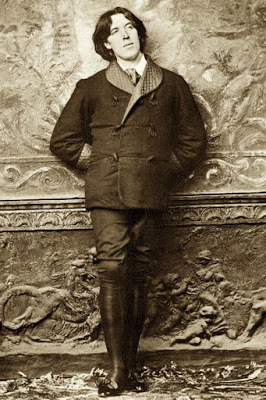
3. Marriage, Babies, and Greek Love
By 1881, Wilde had attained some success and acclaim, albeit minor, with his poetry. It was during this year in London that he first met Constance Lloyd, the daughter of a wealthy jurist. He wouldn’t meet her again for three more years, for during this time Wilde was busy bolstering his reputation, traveling and lecturing and drinking whiskey in America, and living and writing in Paris. After a brief courtship in 1884, Constance and Wilde married in London and quickly went about the serious business of having babies.
Two years into marriage and now with two children, Wilde befriended a young man named Robert Ross, and it was this friendship that pushed the limits, if not broke them altogether, of Victorian “decency.” Ross was a bright 17-year-old, a huge fan of Wilde’s poetry, brazen in his disregard for the Victorian prohibition against homosexuality, and determined to seduce Wilde. Most scholars agree that Ross succeeded in initiating a sexual relationship with Wilde, who had for some time referred to “Greek love” throughout his work. And so, in 1886, Wilde took his first male lover, a scandalous action given the era.
4. Adventures in Sex Tourism
Nothing says “going against the Victorian grain” more than traveling to distant lands in search of extramarital gay sex, but this, according to scholars, is likely what Wilde did. In the late 19th century, the French colonies of North Africa, such as Algeria, were a refuge for those in search of sex tourism. There are various accounts of Wilde’s conduct on these trips, ranging from the purely innocuous to the shocking. In fact, certain scholars claim that Wilde “hunted boys” during these trips, a genuinely indecent fact that, if true, complicates Wilde’s status as a modern-day gay icon.

5. Indecent Scandal, Indecent Decline
In 1891, Wilde met Lord Alfred Douglas, a handsome and young English poet who would be Wilde’s lover for nearly the rest of his life. Douglas was reckless in his pursuit of pleasure and quickly pulled Wilde into the gay prostitution scene that lay deep beneath the surface of Victorian culture. During these years, Wilde’s reputation reached its peak with the completion of his masterpiece, The Importance of Being Earnest, a play immediately hailed as a brilliant.
His success was quickly tainted, however, as Douglas’s father, the Marquess of Queensberry, publicly accused Wilde of being a “sodomite,” a prosecutable offense in 1895. Wilde quickly sued for libel, and Queensberry was forced to prove that his accusation was true in order to avoid imprisonment. Throughout the trial, risqué details of Wilde’s personal life began to surface in the press, and Queensberry was acquitted, bankrupting Wilde in the process. Immediately after the trial, Wilde was arrested for “gross indecency” and a new trial began, resulting in Wilde’s conviction and imprisonment.
Prison life wore Wilde down quickly, and upon his release in 1897 he reentered society with poor health, no finances, and a demolished reputation. A few years later, on November 30, 1900, Oscar Wilde died of cerebral meningitis. He was only 46 years old. Another definition of indecent is “not appropriate or fitting.” Considering Wilde’s literary talent and potential, along with his progressive and exuberant persona, it’s safe to say that such an early death was undeniably indecent.
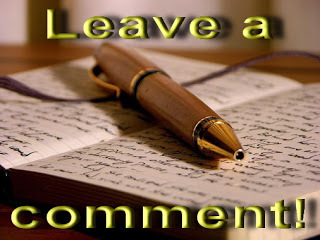
Clancy's comment: Mm ... An interesting character who lived in interesting times.
I'm ...
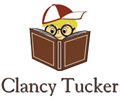
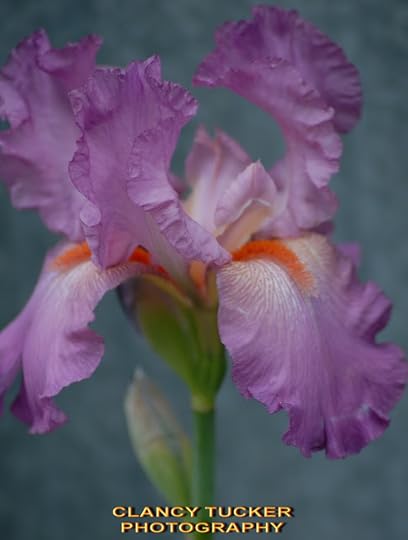
Published on December 08, 2015 03:38
December 7, 2015
8 December 2015 - MORE CUTE GIFS

MORE CUTE GIFS
G'day folks,
As you know, I use these all the time on this blog. I reckon they are amazing. Check out these rippers.
















Clancy's comment: Love 'em! I'd love to have one as a book cover.
I'm ...


Published on December 07, 2015 01:43
December 6, 2015
7 December 2015 - How Kentucky Became the World’s Bourbon Capital
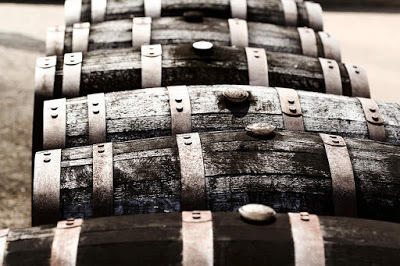
How Kentucky Became the World’s Bourbon CapitalG'day folks,Do you drink Bourbon? I certainly don't, but here are some facts about Bourbon and Kentucky. There’s no law mandating that bourbon must be produced in Kentucky, although it might seem that way given the state’s dominance in distilling the distinctive corn-based, barrel-aged whiskey. According to the Kentucky Distillers’ Association, the Bluegrass State produces and ages approximately 95 percent of the world’s bourbon whiskey.
So is there something in Kentucky’s water that has caused the bourbon industry to flourish? In fact, there is. The state sits atop vast deposits of blue limestone, which filters out hard iron and imparts sweet-tasting calcium and magnesium. “To this day you can go to an open stream in Kentucky, and it will taste better than 90 percent of tap water in the country because the limestone filters out unwanted minerals,” says whiskey historian Fred Minnick, author of “Whiskey Women” and “Bourbon Curious: A Simple Tasting Guide for the Savvy Drinker.”
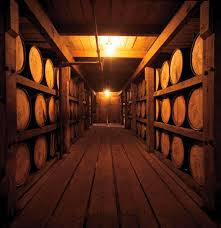
Kentucky’s wide temperature swings—from chilly winters to hot summers—are also conducive to producing bourbon because they cause the charred oak barrels, which give the spirit its amber color and distinctive taste, to alternately absorb and release the whiskey. “We have the ideal climate to age bourbon probably,” says Wild Turkey master distiller Jimmy Russell, a member of the Kentucky Bourbon Hall of Fame who grew up less than five miles from the distillery where he has worked since 1954. “You need the hot summers and cold winters so that the wood can breathe and the whiskey can move in and out of it.”
Another factor that makes Kentucky fertile ground for bourbon production is literally its fertile ground. The influx of settlers who crossed the Appalachian Mountains in the late 1700s soon learned the Kentucky soil was perfect for growing bourbon’s second main ingredient—corn. Drawn in part by Virginia’s 1776 Corn Patch and Cabin Rights Act, which offered 400 acres to any settlers who built cabins and planted corn in its then-territory of Kentucky, immigrants from Germany, Scotland and the north of Ireland were among those who arrived with the whiskey-distilling knowledge from their homelands in tow.
The ease of growing corn in Kentucky caused distillers who migrated from the East Coast to change their whiskey recipes. “Rye was the plentiful grain in Pennsylvania and Maryland,” Russell says, “but when distillers came over the Appalachians they found corn the dominant grain so they used corn instead of rye.”
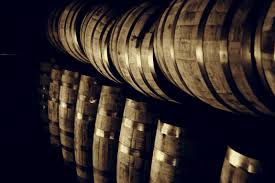
By the 1780s a distinctive style of corn-based whiskey was being distilled in Kentucky, although Minnick says the story that Baptist minister Elijah Craig invented bourbon by accident after storing his whiskey in barrels charred by a fire is mere legend concocted by whiskey advocates to cloak the spirit in the spiritual. “Craig was a very powerful and important person, but we don’t have any credible records to indicate that he would have been a true inventor of bourbon,” Minnick says.
Whiskey increased in popularity after the American Revolution as the import of rum—which had been the most popular alcoholic drink in many American colonies—slowed with decline of the “triangle trade” with Great Britain. The lingering debt from the war, however, caused the federal government to levy a tax on liquor in 1791. Distillers in Maryland and Pennsylvania, in particular, bristled at the tax and led the Whiskey Rebellion, which was eventually quelled by thousands of federal troops dispatched by President George Washington in 1794.
Minnick notes, however, that the Whiskey Rebellion did not spark a mass migration of tax-dodging distillers to Kentucky and that an estimated 500 distilleries were already operating in the state at the time. However, he notes that to prevent a similar popular uprising Congress left whiskey largely tax-free until the Civil War, except briefly to pay for the War of 1812. “After the Whiskey Rebellion, Congress decided not to tax whiskey, but they added tariffs onto rum because there was a thought that money from rum would end up getting into the hands of the British.”
The high levies on rum and its key ingredient, molasses, contributed to soaring whiskey consumption in the early decades of the republic. Kentucky’s whiskey industry, in particular, thrived as slave labor assisted with production and distillers took advantage of the state’s plethora of navigable waterways—such as the Kentucky, Tennessee, Ohio and Mississippi Rivers—that provided easy access to big cities such as Cincinnati and New Orleans.

In addition to Kentucky’s geographic advantages, Minnick says the state’s strong families who passed distilling down from generation to generation and sustained their businesses in bad economic times also allowed the bourbon industry to flourish. “Many major areas had significant distilling capacity, but the stronger families were here in Kentucky, and that sustained bourbon through the years. All the historical family names that you see on these old bourbon bottles were passionate. They developed a following, and for the most part these companies have been able to work together for the common good.”
Although the term “bourbon” began to appear in newspaper advertisements for Kentucky’s particular brand of whiskey by the 1820s, its origins are murky. Some historians believe the moniker was inspired by Kentucky’s Bourbon County—itself named after the French royal family in recognition of France’s support in the American Revolution. Bourbon County originally occupied a large section of central Kentucky, and local distillers stamped its name as the county of origin on whiskey barrels transported around the country. Minnick says another theory is the name derived from Bourbon Street in New Orleans, where the drink was popular in the French Quarter saloons.
“There’s not enough good evidence one way or another,” he says.
There’s one fact about bourbon, though, that can’t be disputed according to Russell. “You can make bourbon anyplace in the country,” he says, “but if it’s not Kentucky bourbon, it’s not bourbon.”
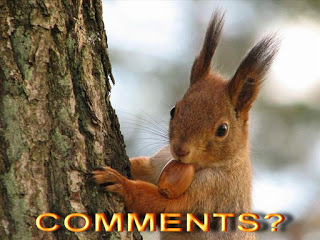
Clancy's comment: There ya go you Bourbon drinkers. Mm ... I might just slip out and have a cold Chardonnay. Just sayin' ...I'm ...


Published on December 06, 2015 03:40
December 5, 2015
6 December 2015 - STUNNING ASIA

STUNNING ASIA
G'day folks,
Welcome to one of my favourite areas of the world.

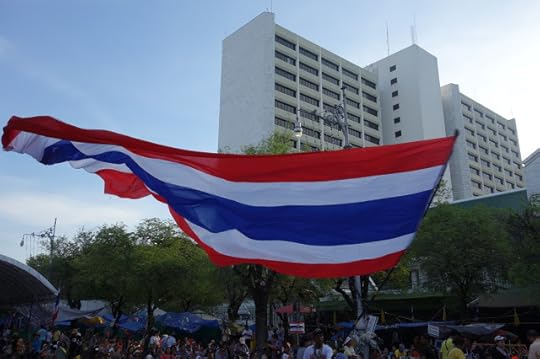

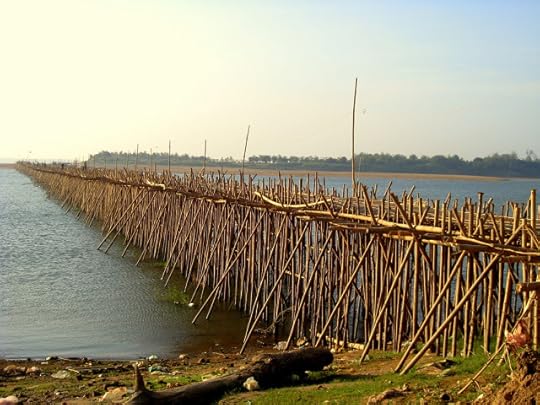

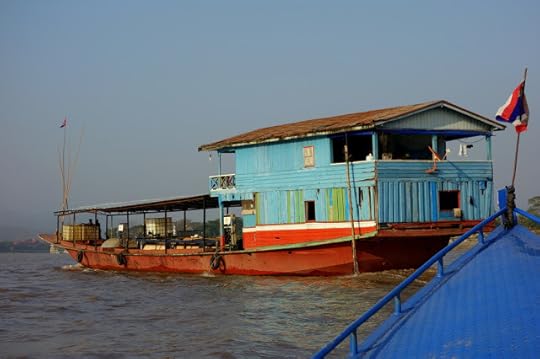


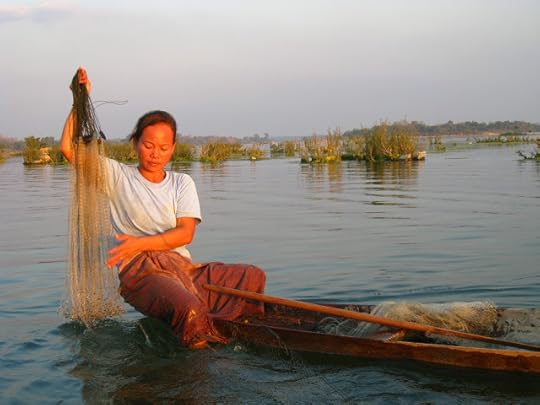


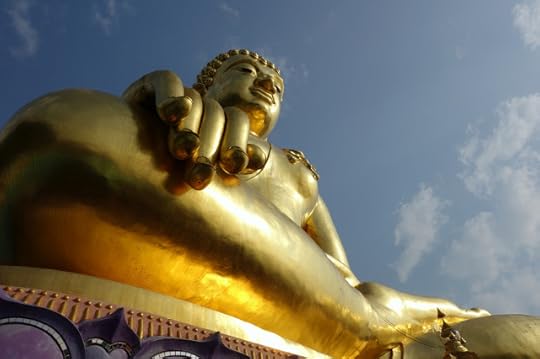
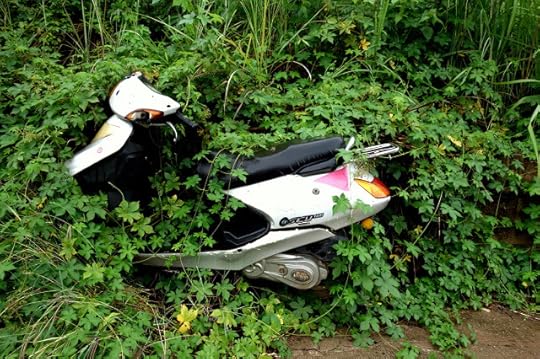
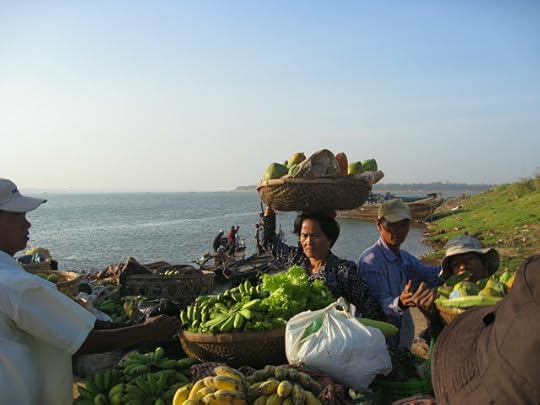
NOW FOR SOME BEER AND DRINKS
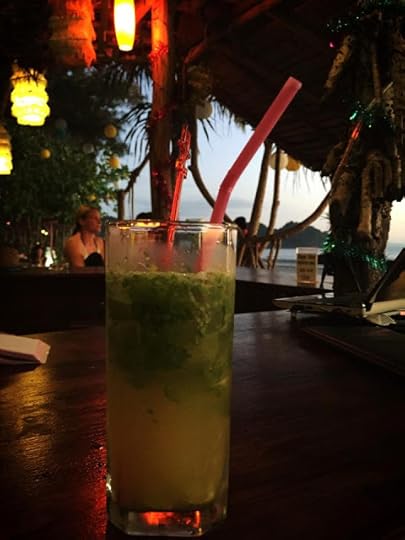

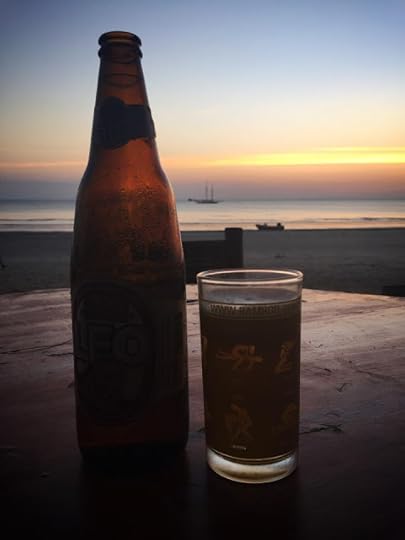
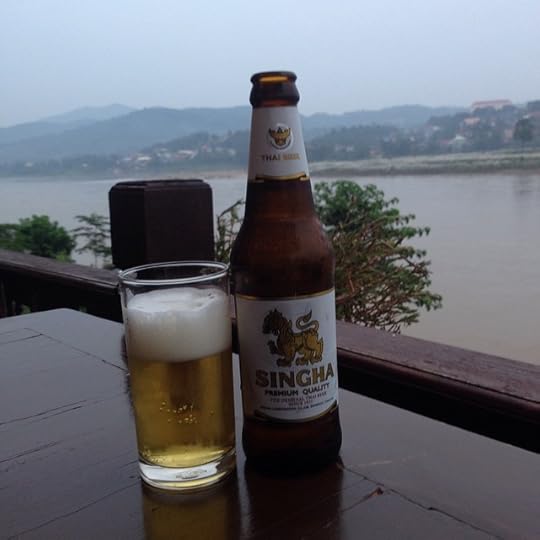
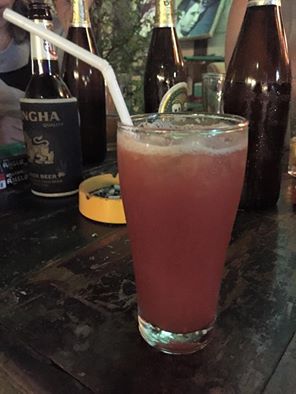
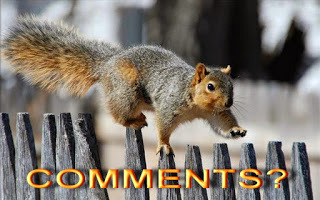
Clancy's comment: Ah ....
I'm ...
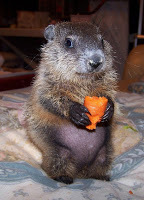
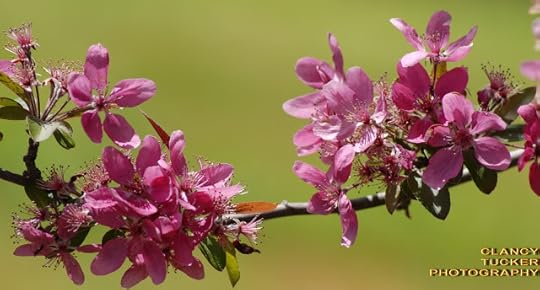
Published on December 05, 2015 04:08
December 4, 2015
5 December 2015 - MICHAEL WAGNER - Guest Author

MICHAEL WAGNER
- Guest Author -
G'day folks,
Welcome to an interview with a man who entertains kids.
Welcome, Michael ...
1. TELL US A LITTLE ABOUT YOURSELF AND YOUR WRITING JOURNEY.
When I was 14 I wrote my first poem. After getting it into the school magazine at the end of that year, it won an award. I think that encouraged me to keep writing, so I wrote more poems, then songs, then comedy and radio and film and TV and lots of other things. Eventually (about 15 years ago) a small, newly-formed publisher asked me to have a go at writing a couple of educational books. I haven’t looked back since.
2. WHAT TYPE OF PREPARATION DO YOU DO FOR A MANUSCRIPT? DO YOU PLAN EVERYTHING FIRST OR JUST SHOOT FROM THE HIP?
I plan in a skeletal kind of way, then let the writing fill in the gaps in whichever creative way it choses. Which often leads to re-planning … then rewriting … then replanning, etc. I find when I plan too much, I get trapped in a rigid process that’s not much fun and not particularly creative. So I like to make a map that shows a few of the major turning points along the way, but doesn’t really tell me how to get there.
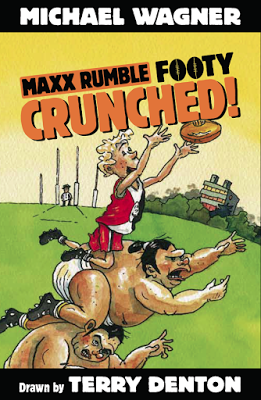
3. WHAT DO YOU ENJOY MOST ABOUT BEING A WRITER?
Working from home and making kids laugh. I worked in offices for about 12 years and, as a result, can’t stand them. The distractions, the politics, the frenemies. I don’t know that I could it anymore, which makes me kind of unemployable, because I’m no good with a hammer either, unless I find a way to work at home – which is where writing comes in. And when I read a story to kids in a school and hear them laugh, I feel like I’ve done something worthwhile with my life.
4. WHAT IS THE HARDEST THING ABOUT BEING A WRITER?
Waiting for money to come in. Sometimes it takes years to make any meaningful money from a story. The wait can be tough.
5. WHAT WERE YOU IN A PAST LIFE, BEFORE YOU BECAME A WRITER?
I was a radio presenter with the Australian Broadcasting Corporation (ABC) for ten years and I wrote all sorts of things before and after that: TV animation, film scripts (that never quite got made), songs, comedy, advertising copy, etc.
6. WHAT IS YOUR GREATEST WRITING ACHIEVEMENT?
The 20-book Maxx Rumble series which has sold hundreds-of-thousands of copies and remains in print after 11 years. I don’t know that it’s the finest thing I’ve ever written (it almost certainly isn’t), but I’m very glad I wrote it.
7. WHAT ARE YOU WORKING ON AT THE MOMENT?
I’m always working on lots of things. It’s like my stories are all horses in a race and I never know which one is going to finish first. I have several picture books at various stages and some chapter books too. And other oddities things as well.
8. WHAT INSPIRES YOU?
Great stories, whether they’re in book, screen, theatrical, song or oral form. A great story makes me want to contribute to the culture as well. But I’m also inspired by the urge to support kids through those complicated, and sometimes tough early school years. Just making kids laugh makes me feel like I’ve helped them a little – that’s what I want to do, help kids.
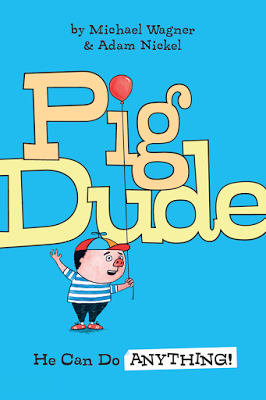
9. WHAT GENRE DO YOU WRITE?
Humour for children of varying ages from 4 to 12.
10. DO YOU HAVE ANY TIPS FOR NEW WRITERS?
Read lots of books about the writing process, absorb everything you can, then forget it all and just write. And if you’re not enjoying yourself when you write, please stop being so hard on yourself. Perfectionism is a curse, just let your natural voice lead the way.
11. DO YOU SUFFER FROM WRITER’S BLOCK?
Not so far. I keep a journal and fill it with random ideas. If you do that, you’ll end up with hundreds of ideas that help you get unblocked. I also work on more than one thing at a time, so if I’m running dry on one I can put it aside and work on something else for a while. But if you’re stuck on a bigger piece, like a novel and it's the only thing you’re working on, maybe go and watch a movie or read a book. That way you’ll be feeding the cultural part of your brain, and getting ideas and inspiration.
12. DO YOU HAVE A PREFERRED WRITING SCHEDULE?
I write best in the morning, so starting by 9 or earlier is important to me. Other than that, I take each day as it comes.
13. DO YOU HAVE A FAVOURITE WRITING PLACE?
My study. It’s small, messy, cosy and safe. I often close the blinds so it’s dark too. But apart from that, overseas. When I’m travelling, my imagination seems to spring to life.
14. WHAT IS YOUR GREATEST JOY IN WRITING?
Reading to kids who are clearly enjoying what they’re hearing.

15. WHAT’S THE GREATEST COMPLIMENT YOU EVER RECEIVED FROM A READER?
Any comment acknowledging the heart in my silly stories. It’s hard to see past the broad humour sometimes, critics often struggle, but when my readers get it, I feel elated and a little relieved.
16. WRITERS ARE SOMETIMES INFLUENCED BY THINGS THAT HAPPEN IN THEIR OWN LIVES. ARE YOU?
I think everything I write is in some way influenced by things that have happened to me. I reckon we often write to repeat or replace our memories. If our memories are good, we repeat them and share them in our stories. If they are bad, we rewrite them and share them in the sort of way we wish they’d occurred, or resolved. Either way, it’s therapeutic to transform the things that have happened to us into stories.
17. OTHER THAN WRITING, WHAT ELSE DO YOU LOVE?
Music. Sport. Good TV, great movies and quality radio. I grew up in a very poor, dysfunctional family and these are all the avenues my young mind saw as ways to a better life. I’ve been very interested in them ever since.
18. DID YOU HAVE YOUR BOOK / BOOKS PROFESSIONALLY EDITED BEFORE PUBLICATION?
I didn’t with my first self-published book, Pig Dude: He Can Do ANYTHING!, but I read it more than a dozen times to audiences, creating fresh drafts between many of the reads. Things get very refined when they’re tested in public – you become extremely aware of what works and what doesn’t. But if I couldn’t read the whole thing to an audience, I would have definitely employed an editor. I did employ a proof reader even with a 1000 word book. That is vital.
19. DO YOU SEE YOURSELF IN ANY OF YOUR CHARACTERS?
I imagine I’m in every one of my characters. I think it’s inevitable because they’re created in my imagination. If they’d come from someone else’s imagination, they would have been different. I figure they’re part me because they’re limited (or enhanced) by my imagination.
20. WHAT WAS YOUR FAVOURITE MANUSCRIPT TO WRITE? WHY?
I’ve been writing a couple of book of poems for very young children which have been incredibly fun to create. I love that they’re quick to emerge, like songs, and don’t require all any agonising or trawling through intricate details. They’re quick and fun.
21. WHAT SHOULD READERS WALK AWAY FROM YOUR BOOKS KNOWING? HOW SHOULD THEY FEEL?
That life is worth living. That you can say serious things in a playful way. That we’re not alone.
22. ARE YOUR BOOKS SELF-PUBLISHED?
I’ve just released my first self-published book – Pig Dude: He Can Do ANYTHING! The other 72 I’ve written were published by others. My new publishing venture is called Billy Goat Books.
23. DESCRIBE YOURSELF IN FIVE WORDS.
Resilient. Playful. Persistent. Honest. (and as ironic as it sounds at this moment) Humble.
24. WHAT PISSES YOU OFF MOST?
Criticisms from people who think their taste is definitive and have no idea what most children like to read. It strikes me as a form of narcissism. And pathological narcissism is the other thing that really pisses me off… Actually, I’d better stop there.
25. WHAT IS THE TITLE OF THE LAST BOOK YOU READ? GOOD ONE?
A Man Called Ove. It was one of the best book I’ve ever read. So humane and gentle and fun, and full of heart.
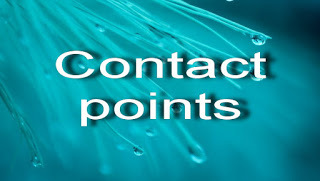
BOOKSHOP
BILLYGOATBOOKS
WEBSITE

Clancy's comment: Thanks, Michael. Keep writing and making kids laugh. Not everyone can do that. It's a gift.
I'm ...

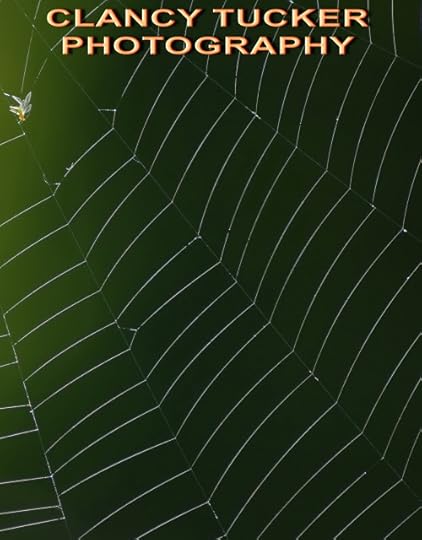
Published on December 04, 2015 02:33
December 3, 2015
4 December 2015 - MARIA ROCHELLE - Guest Author
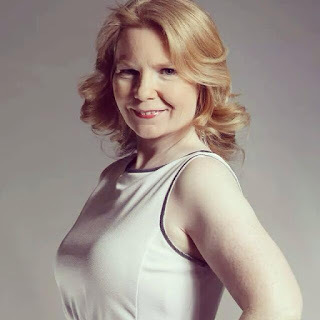
MARIA ROCHELLE- Guest Author -
G'day folks,
Here is an interview with a very talented author from the USA. Maria Rochelle is the author of the Jasmine series of books.
Welcome, Maria ...
WHAT WERE YOU IN A PAST LIFE, BEFORE YOU BECAME A WRITER?
I was an administrative assistant for a Captain in Uniformed Patrol Division.

WHAT DO YOU ENJOY MOST ABOUT BEING A WRITER?
Writing is liberating! I enjoy that I can express my thoughts and feelings in my poetry and in my song writing. I also enjoy that I can have a little fun and tell a cute story about a miniature schnauzer who goes on adventures with her pals. I especially enjoy hearing a child tell me that they love Jasmine (main character in my books).
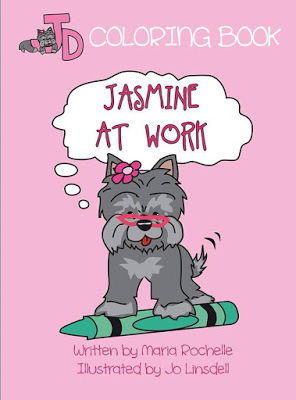
DO YOU HAVE A FAVOURITE WRITING PLACE?
Yes, I have a couple actually. I enjoy writing at Starbucks which is conveniently not far from me, and I also enjoy writing in my dining room which is my office space.
WRITERS ARE SOMETIMES INFLUENCED BY THINGS THAT HAPPEN IN THEIR OWN LIVES. ARE YOU?
For me personally, my childhood has had an impact on my writing in particularly to my children books. I wanted to teach children to dream about what they want to do with their lives because I wasn’t taught that. My Mother was too busy with working and raising children to teach me, and I don’t think it was discussed very much in the time that I was growing up.

WHAT ARE YOU WORKING ON AT THE MOMENT?
I’m writing for a couple of magazines right now which are mainly interviews with those in the entertainment industry and film news as well. I’m also writing a screenplay for a TV show that I’m creating and another children’s book.
WHAT INSPIRES YOU?
Other writers inspire me and music and quotes. I really love to read blog posts by Mark Manson, and he writes about his life experiences and shares really informative posts about love, relationships and so many other topics as well. Music is inspirational in a way that nothing else is because the right group or solo artist can hit on a topic that I’m thinking about and just impact me. If I’m having a bad day, I can just go to my I-phone and look through my songs on Amazon or I-tunes, and find that song that I know will inspire me or motivate me. I love quotes like: “never give up” or “keep the faith.” I can always find a quote on Pinterest or Twitter for any inspiration that I might need.
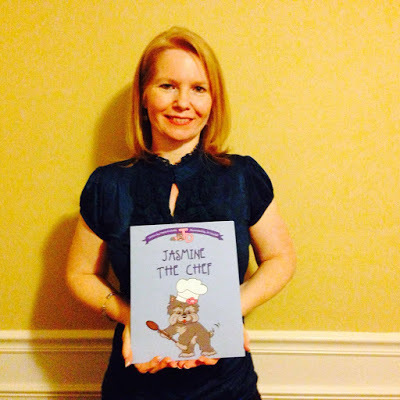
WHO IS YOUR FAVOURITE AUTHOR AND WHY?
James Patterson is definitely one of my favorites. He grabs me with the first page of his book, and I don’t want to put it down. One of my favorite series by him is the Alex Cross series.
OTHER THAN WRITING, WHAT ELSE DO YOU LOVE?
Working out, being with my family and friends, singing and writing songs, traveling and watching movies
DO YOU HAVE ANY TIPS FOR NEW WRITERS?
Never give up on your dreams and keep writing. Read every day and write every day. Learn to network with other writers and others who are not in the industry of writing. Have a social presence by being on Twitter, Instagram or Pinterest or all three.
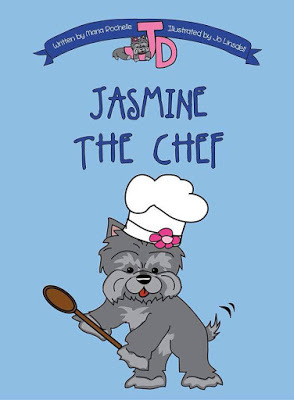
HOW MUCH THOUGHT GOES INTO DESIGNING A BOOK COVER?
I don’t have to think too much about design covers because I decided to have my main character, Jasmine, to be on each cover of the book. My illustrator, Jo Linsdell, gives me ideas as well on what Jasmine should be dressed as based on the title of the book. So, it might take an hour or more to figure out what is the best look for her and then to pick the color of the book as well.
WHAT ARE YOUR PLANS FOR THE FUTURE?
I would like to have more Jasmine Dreams books published as well as finish a couple of novels that I’ve been working on.

Facebook: https://www.facebook.com/author.maria71?_rdr=p
Website: http://www.mariarochelle.com/
Amazon:

Clancy's comment: Well done, Maria. You have some very cute-looking books. Keep going.
I'm ...
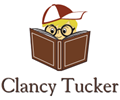

Published on December 03, 2015 03:30
December 2, 2015
3 December 2015 - FACTS ABOUT WALT DISNEY
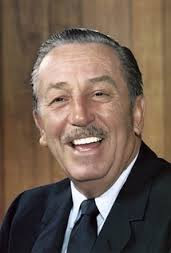
FACTS ABOUT WALT DISNEY
G'day folks,
Here is a man most of us grew up with. But did you know that ...
For almost 100 years, the name Walt Disney has been so synonymous with animated films, television channels, and child-friendly theme parks that it’s easy to forget that, at one time, the moniker referred to an actual person. Born in 1901, Walter Elias “Walt” Disney grew to be one of America’s most preeminent business tycoons by the time he died in 1966. Within this short time, he also became a beloved animator, producer, director, screenwriter, and voice actor (who just happens to have more Academy Awards and nominations than anyone else in history). Not too bad for a cartoonist from Chicago. Although Walt Disney died almost 40 years ago, the mass media stronghold of his eponymous company remains as strong as ever. The voluminous canon of Walt Disney Studios, not to mention the work of all of its subsidiaries, often overshadows the life of its founder.
Soon, however, the voice of Walt Disney himself will be pumped into movie theaters throughout the country. On November 27th, the Walt Disney Animation Studios will release Get a Horse!, a 7-minute animated film featuring the studio’s quintessential stars, Mickey Mouse and his favorite lady friend Minnie Mouse, who embark on a jubilant musical wagon ride (that is, until Peg-Leg Pete arrives and tries to ruin all the fun). Get a Horse! will accompany the studio’s new feature film, Frozen, and will include archival recordings of Walt Disney as the voice of Mickey Mouse. In honor of the short film’s release and the resurgent voice of the company’s creator, here are seven facts you may not have known about both the man and the studio named Walt Disney.
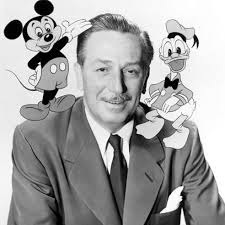
1. Mickey was almost Mortimer. On a train ride following a less than fruitful business meeting in 1928, Walt Disney, then only 27 years old, sketched a mouse. This mouse would eventually become the official mascot of a multinational corporation worth tens of billions of dollars, but Walt, of course, didn’t know this at the time. He called the sketch “Mortimer Mouse” and showed it to his wife, Lily. After deeming the name Mortimer much too pompous, Lily suggested giving the mouse a cuter name, such as Mickey. Thankfully, Walt agreed with her, and a star was born.
2. Walt was anti facial hair…with one exception. It took almost 60 years, but, as of this year, employees at Walt Disney’s two U.S. theme parks can finally show up at work with a stylish beard or goatee (but only if they are “neat, polished, and professional,” according to the official memo). However, at Disneyland in the 50s and 60s, even guests with facial hair, not to mention longhaired hippies, were turned away, as they were told they unfortunately failed to meet the standards of Disneyland’s dress code. Even Jim McGuinn, the future frontman of The Byrds, was once denied admittance for sporting a provocative Beatle cut. The company eventually relented on this policy, though, and allowed all hirsute patrons to enjoy “The Happiest Place on Earth.” Now, the peculiar double standard: Think of any picture of Walt Disney that you have ever seen. What exists in almost all of them? A mustache.

3. The final words ever written by Walt Disney were “Kurt Russell.” Really, no joke. In 1966, as Disney was suffering from lung cancer and nearing the end of his life, he scrawled the name “Kurt Russell” on a piece of paper and died soon after. At the time, Kurt Russell was a child actor for the studio and had just signed a lengthy contract. To this day, no one knows what Disney meant or intended, including Russell himself.
4. Walt still has a home at Disneyland. During the construction of Disneyland in the 1950s, Walt moved into a one-bedroom apartment above the theme park’s Fire Station on Main Street in order to work and watch his dream come to life. The apartment still exists and has been left largely untouched. During his stay there, Walt lit a lamp in the window to alert the staff of his presence. This lamp is now permanently ablaze in his honor.
5. Don’t be surprised if you experience Disney déjà vu. When you first watched Disney’s Robin Hood, did you wonder if you had seen it all before? If so, there’s no need to worry. In 1915, an animation technique called rotoscoping was invented. This technique involves drawing over film footage of live actors, which allows animators to capture realistic human movement. It also lets animators recycle animated movements for use on characters in different films. So, the next time you watch Disney’s Robin Hood, just remember that large parts of it were, thanks to the studio’s use of rotoscoping, gathered from Snow White and the Seven Dwarfs, The Jungle Book, and The Aristocats.

6. Mickey and Minnie Mouse actually got married.
Wayne Allwine and Russi Taylor are not well-known names, even among Disney aficionados, but their animated personas are seared into most people’s minds. In 1991, Allwine, who was the voice of Mickey Mouse for 32 years, married Taylor, the voice of Minnie Mouse, and the couple remained happily married until Allwine’s death in 2009.
7. Nobody, including Walt Disney, is perfect. While Walt Disney was an innovative and successful man, he was also the subject of many controversies, most of which involved rumors that he was anti-Semitic and racist. These rumors were, and still are, hard to dispel. In the 1930s, Disney attended meetings of a pro-Nazi organization, the German American Bund. He also hosted a known Nazi propagandist and filmmaker, Leni Riefenstahl, and gave her a tour of Disney Studios. To make matters worse, Disney was also accused of perpetuating black stereotypes in his films. But, for all of his critics, Disney also had scores of supporters who claimed he was far from being either anti-Semitic or racist. The debate on Disney’s alleged discrimination and racism continues to this day.
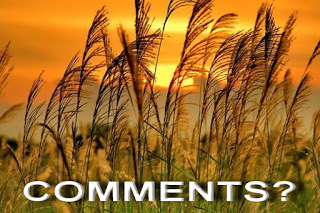
Clancy's comment: There ya go. Did you know all that?I'm ...
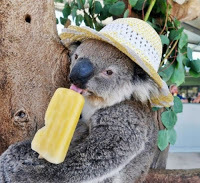

Published on December 02, 2015 04:08
December 1, 2015
2 December 2015 - MOTHER NATURE IS CUTE
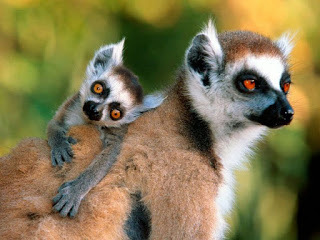
MOTHER NATURE IS CUTE
G'day folks,
Here are some smart pictures of very cute members of the animal kingdom, taken by very talented photographers.
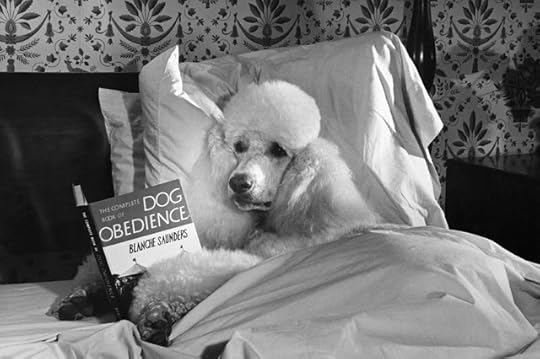
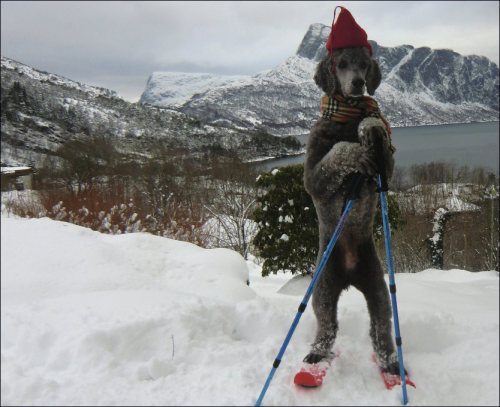
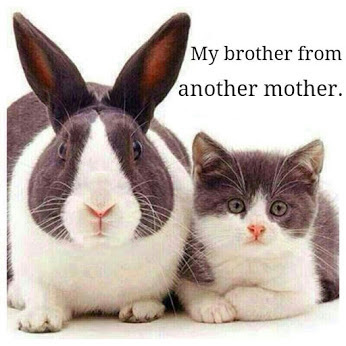



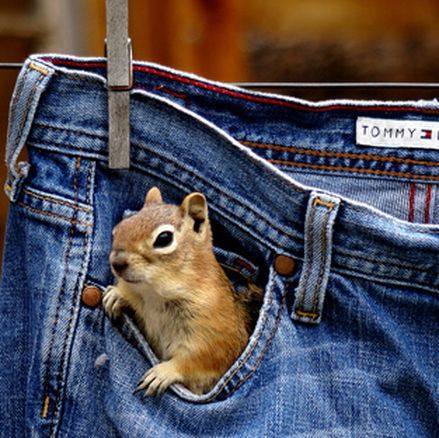
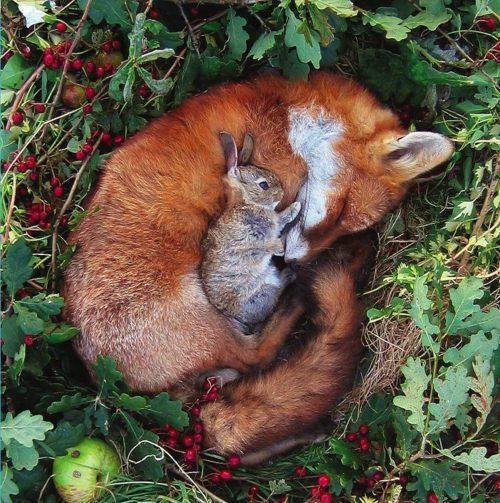
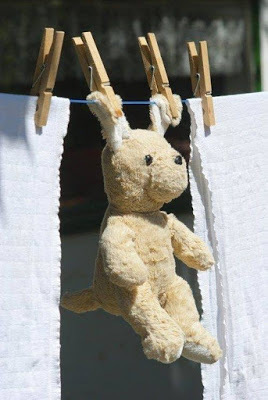



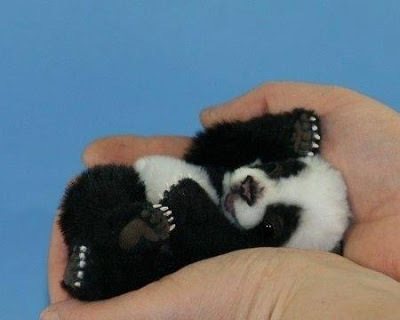

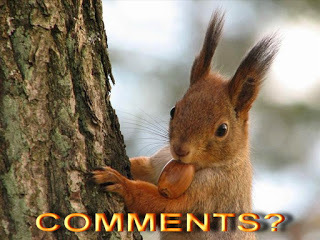
Clancy's comment: I bet some of these pictures brought a smile to your dial.
I'm ...


Published on December 01, 2015 04:51



